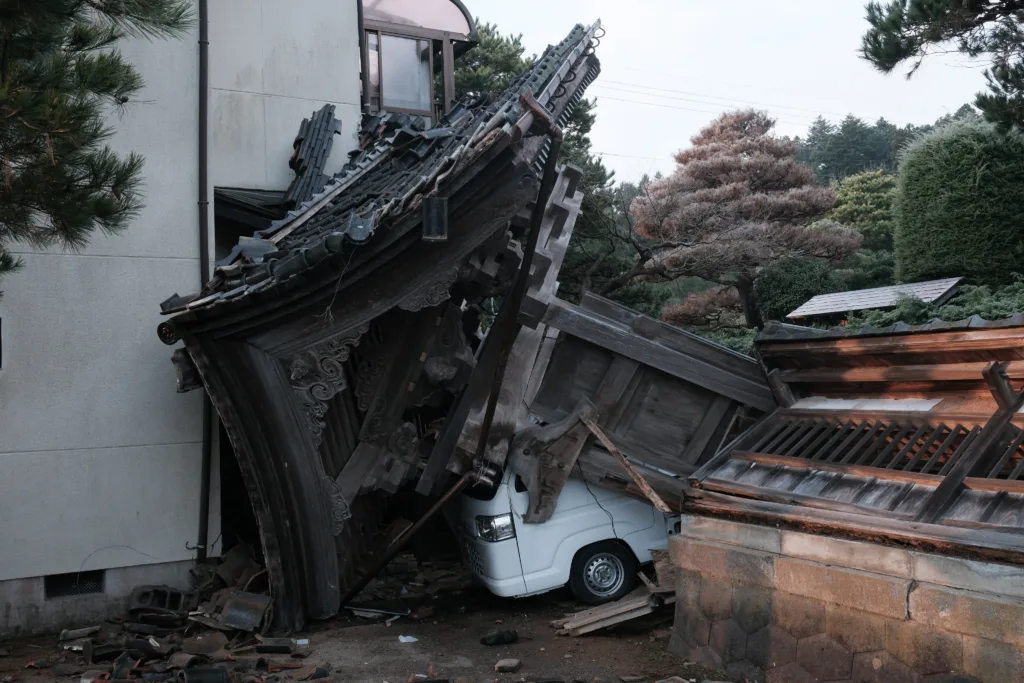WAJIMA, Japan (January 3, 2024) – Japan continues to grapple with the aftermath of a devastating 7.6-magnitude earthquake that struck the Noto Peninsula on New Year’s Day. The powerful tremor, followed by numerous aftershocks, has left at least 62 people dead and thousands injured, while also causing widespread damage to homes, buildings, and infrastructure.

Rescue efforts are in full swing across the affected areas, with emergency personnel working tirelessly to locate survivors trapped under debris and provide medical assistance to the injured. However, access to some of the hardest-hit regions remains challenging due to damaged roads and bridges.
“This is a race against time,” declared Prime Minister Fumio Kishida, as he pledged the government’s full support for the rescue and recovery operations. He acknowledged the significant challenges ahead, saying, “The extent of the damage is still being assessed, but it is clear that this will be a long and difficult road to recovery.”
While all tsunami warnings have been lifted, concerns remain about aftershocks, with seismologists advising residents to stay alert and prepared. Shelters have been set up across the affected areas, providing refuge for those displaced from their homes.
International aid is pouring in, with teams from various countries offering their expertise and assistance. The United Nations has activated its emergency response mechanisms and promised to coordinate the international aid effort.
The full impact of the earthquake is still unfolding, and the death toll is expected to rise further. The immediate focus remains on rescue efforts and ensuring the safety of those affected. However, the long-term task of rebuilding shattered lives and communities lies ahead.
Reference : http://www.bbc.com





